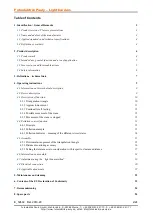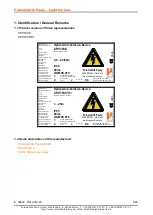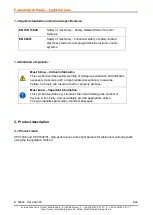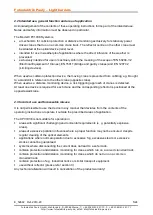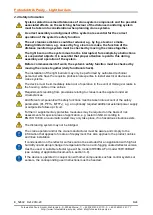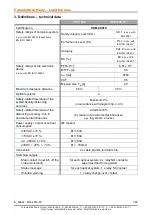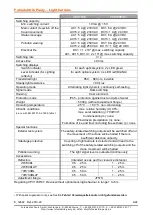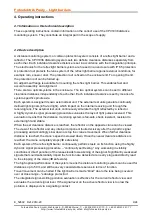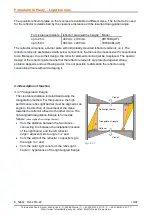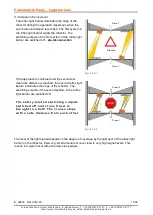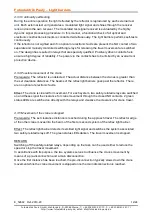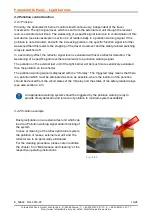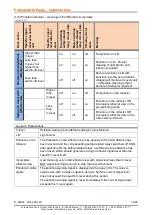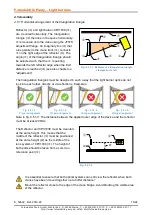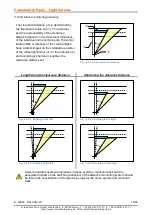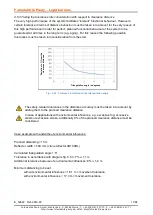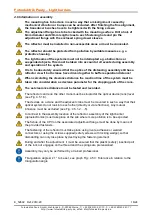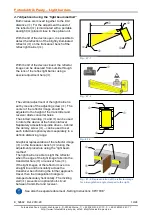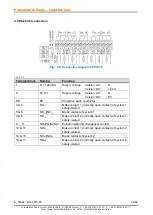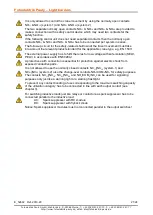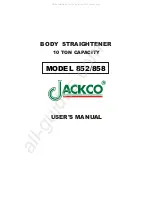
Fotoelektrik Pauly – Light barriers
E_52692 Ref. 2019-29
6/24
Fotoelektrik Pauly GmbH, Wahrbrink 6, D-59368 Werne, T: +49 2389/402 27-70, F: +49 2389/402 27-77
http://www.fotoelektrik-pauly.de, eMail: info@fotoelektrik-pauly.de
2.4 Safety information
System-related movement tolerances of crane system components and the possible
associated effects on the switching behaviour of the distance monitoring system
must be taken into consideration when planning crane systems.
A correct assembly and alignment of the system are essential for the correct
operation of the system’s safety function.
The set clearance distance could be reduced, e.g. by fog, steam or smoke.
During limited vision, e.g. caused by fog, steam or smoke, the function of the
distance monitoring system must be checked by moving the cranes together.
The light beam on the system must not be interrupted, for example by obstructions
or suspended objects. It is essential that proper attention is paid to this during
assembly and operation of the system.
Before commencement of
work, the system’s safety function must be checked by
moving the cranes together (daily functional check).
The installation of the light barriers may only be performed by authorized technical
personnel who have the requisite professional expertise to install electrical devices on
crane systems.
The device must be immediately taken out of operation in the event of damage or leaks in
the housing, cable or line entries.
Requirements resulting from provisions relating to cranes must be applied under all
circumstances.
All different components with safety functions must be taken into account of the safety
parameters (PL, PFH
d
, MTTF
d
), e.g. an optionally required additional external power supply
or output side follow-up circuit.
Further or supplementary protective measures may be required on the basis of risk
assessments for special areas of application, e.g. restart inhibit. According to
EN ISO 13849, an automatic restart may only take place, if no hazardous situation exists.
The distancing system may not be bridged.
The crane operator and/or the crane manufacturer must be aware and comply to the
information that applies to his area of deployment; this also applies to the product, cables
and lines installation
If condensation on the reflector surface cannot be excluded for an application with high air
humidity or/and abrupt change in temperature then an anti-fogging coated reflector version
must be used. A suitable reflector type will be model 4R100BLAF or model 18R100BLAF
(see catalog of applicable documents in section 4.9).
If the device is operated in conjunction with other components such as control systems or
sensors, the corresponding user instructions must be heeded.


